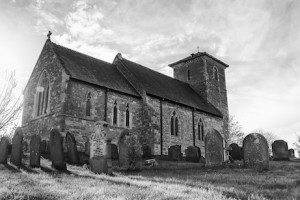Christmas is a Christian festival, but a lot of its traditions originate from the older pagan festival of Yule. Yule or the Winter Solstice is on 21st December; it is the shortest day and longest night in year. From this point on days will begin to get longer. Pagans come together celebrate the return of the sun or re-birth of the sun God.
Lets have a look at 5 Christmas traditions and discover their pagan origins:

1. The Christmas tree
The evergreen Christmas tree started with the pagans. They saw evergreen as symbolic of the eternal cycles of nature: birth, life, death and re-birth. The re-birth always being seen as a result of the sun’s return.
I remember decorating the Christmas tree when I was little. My mum would let me and my brothers decorate one side of the tree and then put that side against the wall. Or she’d let us decorate it and then strategically move all of the decorations to where she wanted them to be, before visitors began to arrive. As we got older, she simply refused to let us decorate the tree at all. Did anybody else’s mum do that, or was it just mine?
The decorations, like the round babuls in colours of red and yellow and the lights (before electricity candles were used) are all seen by pagans as representations of the sun God.
2. The Presents
Pagans gave presents long before Christian’s came along, but on New Years Day rather than at Yule. The presents were often small and symbolic of a blessing for the year ahead.
Christian’s didn’t start giving presents until relatively recently. In Britain due to poverty and culture, Christmas presents didn’t commonplace until around the Victorian Era. There are records of wealthy people giving presents before then, but it was only some people and these were the upper classes of society.
3. Father Christmas
Father Christmas or Santa goes back to the Christian Saint Nicholas. Saint Nicholas had a reputation for secret gift giving to children and for valuing children greatly.
But what show his pagan roots are the colours of his archetypal dress. When I think of Father Christmas, I think of Miracle on 34th Street. I imagine the scene in which Kris is putting on his suit for the first time. His red suit with white trim, black belt with golden buckle, his black boots and of course his red hat. These colours: red, white and gold are all associated with the pagan sun god, who is believed to be re-born on Yule.
This time of year, mistletoe always seems to find it’s way to the office Christmas party. Hung in some precarious doorway, it can lead to an awkward moment of avoiding eye contact and pretending you’ve not seen it or to a drunken Christmas snog with the hottie from the IT Department.
Mistletoe’s pagan origins are as a symbol of fertility. Yule was a festival of fertility, by the very nature of it being the festival were the life-giving sun God is re-born. Often pagan’s would give mistletoe to those wanting to conceive.
5. The Humble Robin
Every year I receive at least one Christmas card with the humble robin on. His pagan associations come from his striking reddy orange chest, a symbol of the sun and also in his ability to fly. His ability to fly means that he can leave and then return, very much like the sun God.
There you have it, 5 Christmas Christian traditions that originated from paganism. It’s not just Christmas that has pagan roots, Christian festivals throughout the year have pagan traditions and elements integrated into them.
Have a great Christmas or Yule, whichever you choose to call it and whatever religious belief system (or not) is.
Published by: The Gay UK on Tuesday 24th December 2013.














